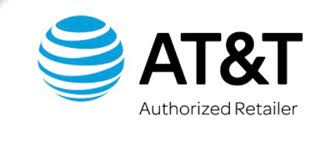AT&T Internet

(844) 319-1735
- PRICE RANGE $40 to $80 / mo.
- TECHNOLOGY DSL
- SPEED RANGE (DOWNLOAD) 6.0 mbps to 1,000 mbps
- SPEED RANGE (UPLOAD) 1.0 mbps to 1,000 mbps
AT&T Internet OVERVIEW
AT&T offers fiber optic and hybrid DSL internet connections to many residential consumers and businesses across the US. They also offer a variety of “triple play” plans with bundled TV and home phone service.
AT&T Internet TECHNOLOGY
AT&T offers fiber optic and hybrid DSL internet connections to many residential consumers and businesses across the US. They also offer a variety of “triple play” plans with bundled TV and home phone service.
Their DSL offering, historically known as AT&T U-verse, leverages a fiber-to-the-node (FTTN) layout where fiber optic cable terminates at a point near consumers, with the final stretch to the subscriber residence reached via telephone, ethernet, and in some rare cases coaxial cable. This hybrid fiber network has allowed AT&T to offer higher bandwidth plans than traditionally expected from DSL.
In addition to their DSL offering, AT&T also offers fiber-to-the-home (FTTH) in some areas. FTTH is considered the “gold standard” for strong, fast, and reliable home internet connection.
AT&T Internet RATINGS AND REVIEWS


41.0% recommendation rating according to 92,970 verified users.
Suddenlink Communications

(888) 317-7540
- PRICE RANGE $39.99 to $89.99 / mo.
- TECHNOLOGY Cable
- SPEED RANGE (DOWNLOAD) 50 mbps to 1,000 mbps
- SPEED RANGE (UPLOAD) 8.0 mbps to 50 mbps
Suddenlink Communications OVERVIEW
Broadband Internet offerings from Suddenlink come via their hybrid fiber coaxial (HFC) network, alongside TV and phone plans. While less future-proof than a true “fiber” network, Suddenlink’s HFC network is optimized to deliver speeds that rival fiber, up to 1,000Mbps.
Suddenlink Communications TECHNOLOGY
Broadband Internet offerings from Suddenlink come via their hybrid fiber coaxial (HFC) network, alongside TV and phone plans. While less future-proof than a true “fiber” network, Suddenlink’s HFC network is optimized to deliver speeds that rival fiber, up to 1,000Mbps.
Hybrid fiber coaxial (HFC) networks work by bringing optical fiber cables as far as individual neighborhoods or subscriber areas, only switching over to existing coaxial copper TV infrastructure for the “last mile” between the node and subscriber residences.
The upcoming DOCSIS 3.1 protocol for delivering broadband Internet data via coaxial cable promises to make high-speed Internet available to even more consumers in the near future without expensive upgrades to existing coaxial networks in use.
Suddenlink Communications RATINGS AND REVIEWS



